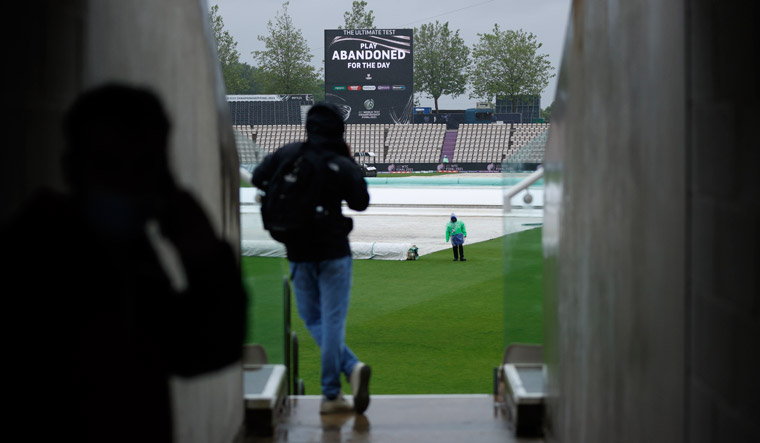Pandemics pause pursuits, puny and powerful. Just ask corona.
Yet, with a gentleman’s resolve, cricket rose above the waves. Two years went into making Test cricket “relevant” again. There was, finally, a world cup for the longest, most strenuous and, dare I say, the purest form of the game. And then Day One was undone. Not by an invisible foe, but by water falling from the sky. Agua—as Cristiano Ronaldo so eloquently put as he placed the cola out of frame—literally spoilt the sport. The first day of the World Test Championship, fought for by India and New Zealand, was washed out by rain.
It never rains, but it pours; it’s raining cats and dogs; it’s raining harder than a cow peeing on a flat rock; you can stand under my umbrella (RiRi fans, hi). The sayings are many, the feeling is solitary. A cricket fan feels cheated in these situations, to put it plainly.
For the non-sports fan who’s stumbled upon this article, firstly, why are you here? And, secondly, no, cricket cannot be played in rain. The ball is too small to see in rain; it becomes a heavy, soggy mess; there are puddles on the pitch; the players could slip and fracture a hip; and it wouldn’t be fair on the team that has to play in the rain, while the other team gets sun.
But why hasn’t cricket, with all its might and money, been able to circumvent the drench? They’ve tried, to be honest. While Duckworth and Lewis have posted their names in the annals of history with their frustrating rule, some innovations have, indeed, tried to overcome the pour.
Tennis has, in some measure, adopted retractable roofs (like Wolverine’s claws [my editor has told me to engage with the young ones]). Cricket, too, has done it, but it is way more expensive. A sports-illiterate friend asked me why we couldn’t have a dozen drones pull tarpaulin sheets over the ground. I didn’t have an answer.
Some reports have said that roofs affect swing bowling. Tenuous, at best. Another, more evident reason, is that big hitters like Chris Gayle or Hardik Pandya, might strike the roof and be robbed of a six. The Big Bash went back and forth on this, but decided the roof-hit was a six. World cricket can follow suit.
But if open-close roofs are way too costly, why not play the match in a desert? (Not really a desert, but a relatively arid country). Why have the Test 'World Cup' in rainy England? Why not a drier Dubai? I had to explain to him the prestige associated with the home of cricket and why the *first* WTC had to be held in England (They have to have something “coming home”, right?).
On a more serious note, climate change will affect cricket the most, apparently. Though any English graduate would tell you not to mix up weather and climate, a report published by the Rapid Transition Alliance (a network of global organisations working on climate change) has predicted that cricket will be among the sports hit hardest by the climate emergency. The study claims that the percentage of ODIs played in England affected by rain has doubled since 2011 compared to the preceding decade. We all remember the 2019 ODI World Cup, don’t we?
But, maybe, Test cricket, the grandpa of the formats, is not the one you ask for change. You sit with him, take deep breaths, and reminisce. After all, this level of alertness and eagerness to evade a natural phenomenon is too much to ask of a game that, every day, breaks for a spot of tea.
And that’s the end of the session. You’ll get the new ball tomorrow.





